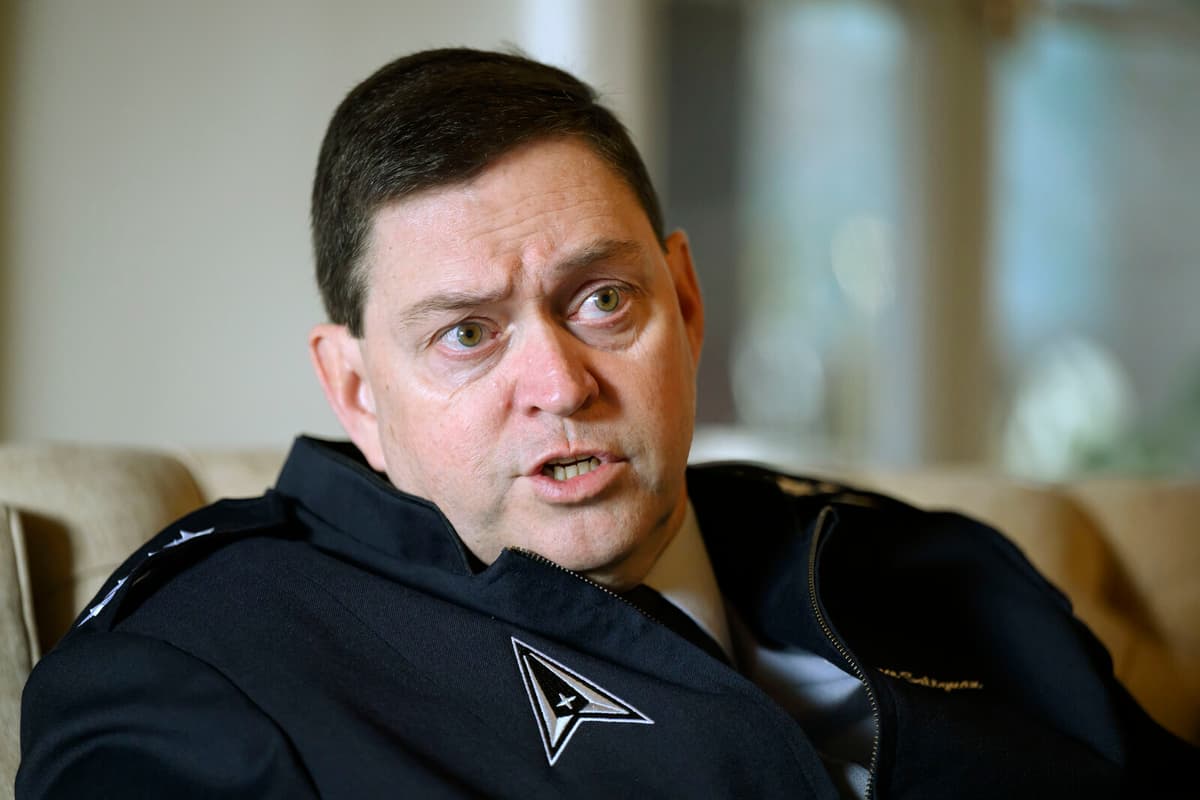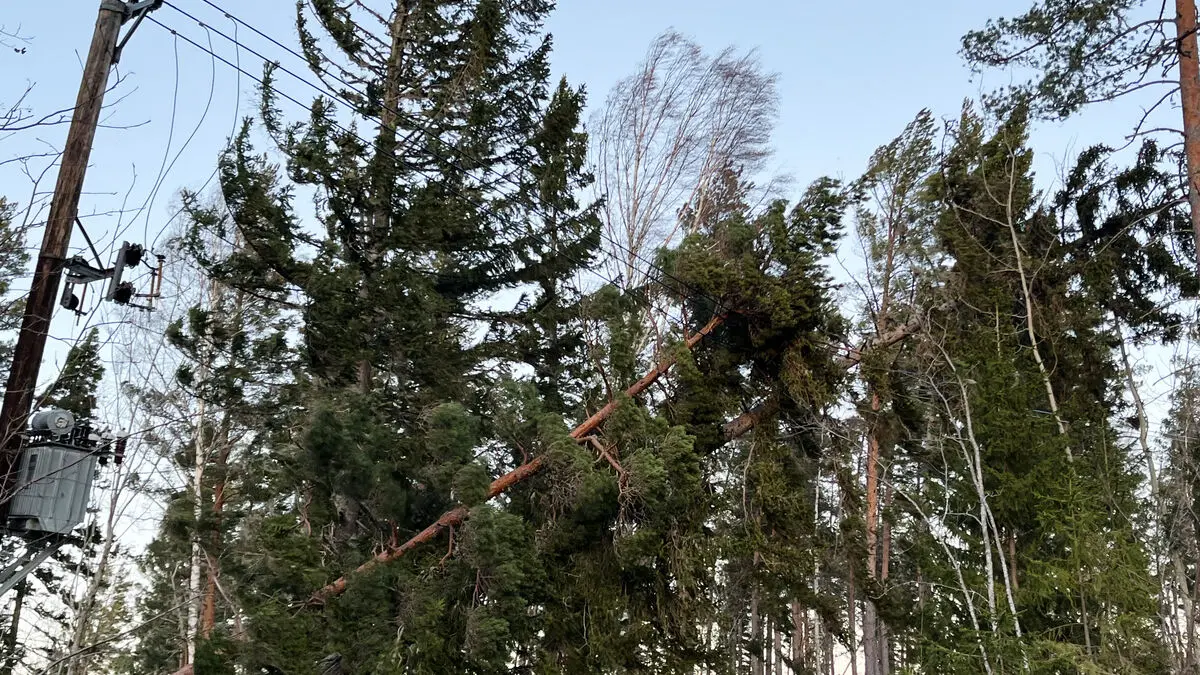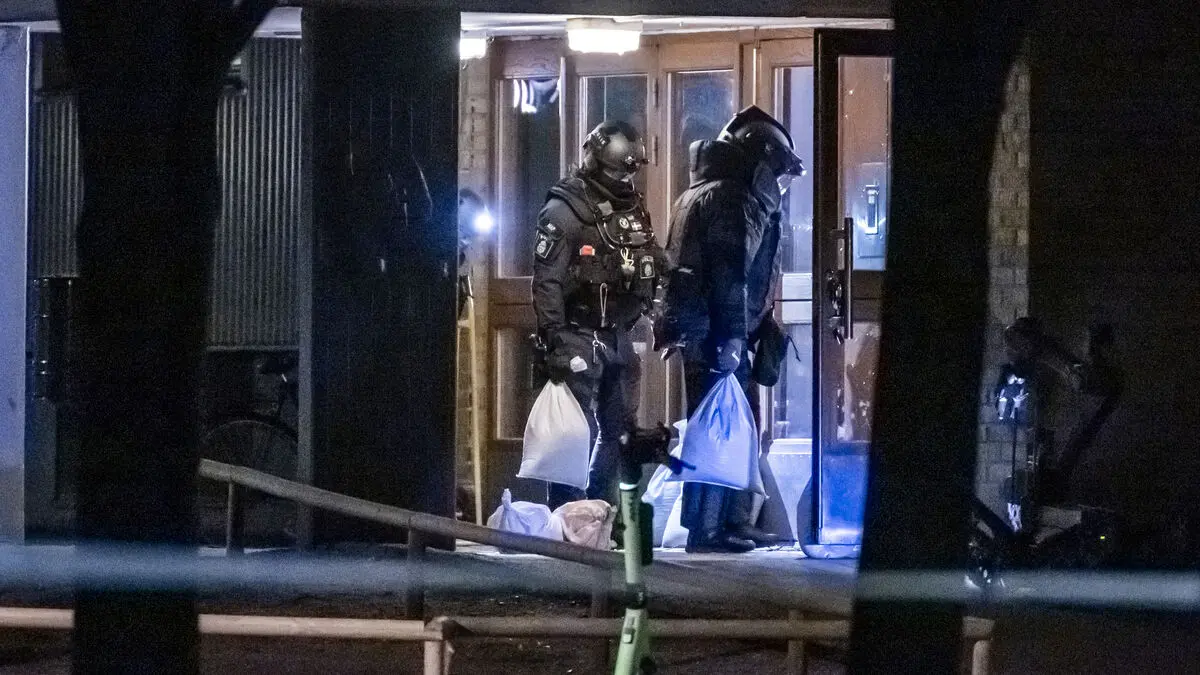In February, intelligence reports in the USA made headlines around the world.
The American Congress had been informed about Russian plans to launch a nuclear-armed system to be able to strike satellites in space.
The system was under development and not yet in orbit, according to the reports.
General B Chance Saltzman leads US Space Force, the newest of the six branches within the USA's armed forces. He is visiting Sweden and has, among other things, been shown around the Esrange launch base outside Kiruna, where satellite launches are planned for next year.
It's undoubtedly real, Saltzman responds to the question of whether the threat to satellites should be taken seriously.
The most dangerous and irresponsible behavior we're seeing right now comes from Russia and China. They have demonstrated the ability to physically attack satellites. China has demonstrated a satellite that can grab another satellite and pull it out of its orbit.
Kinetic weapons
Other methods that may seem like pure science fiction are lasers, energy weapons, disruption of radio broadcasts, "Russian dolls", where a satellite shoots out a smaller object to collide with another satellite.
We haven't invested in these capabilities, but we see how China and even Russia are heavily investing in all of these, says Saltzman.
In January 2007, China destroyed one of its own space probes through a collision, the debris created then still causes problems. And if only a small piece of debris were to hit the International Space Station ISS, it could cause a catastrophe, the general continues.
He simultaneously opens up for the possibility that the USA may need to change its stance considering the number of weapon systems being developed.
People don't understand how big a part of their daily lives is controlled from space, he continues. Everything from GPS systems, weather monitoring for agriculture to financial transactions is handled via satellites in orbit around the Earth.
Satellites are also part of modern warfare, as seen during Russia's war of aggression against Ukraine. Elon Musk's company Starlink, which is part of Space X, has provided Ukraine with internet via hundreds of satellites, and since last year, the USA has been paying for the service. Musk has simultaneously received criticism for not allowing Starlink over Ukrainian areas occupied by Russia, such as the Crimean Peninsula.
I have no problem with that since we don't do business with Elon Musk. We do business with Space X. We have contracts, and this is just one of many. We use commercial companies for launches and have a very productive cooperation with the business community, says Saltzman.
"They have the capability"
Regarding the intelligence reports, he confirms that the USA sees how Russia is developing and testing satellites that can carry nuclear weapons.
They have the capability right now, says the general.
But have they acted?
They haven't launched nuclear weapons. We don't believe that's true.
He warns of far-reaching consequences in the form of radiation if Russia were to take it a step further and detonate a nuclear warhead. Personnel on the International Space Station ISS would likely need to be taken home.
During the Cold War in the 1960s, both the USA and the Soviet Union tested nuclear weapons at high altitude, but in 1967, a UN treaty was signed that prohibits the placement of nuclear weapons in orbit around the Earth.
Our current nuclear doctrine has a deterrent effect to prevent nuclear weapons from being used. That's why it's so destabilizing that Russia is taking it to another level, says Chance Saltzman.
He doesn't want to go into what the USA's response would be if the Russian plans continue, but the USA wouldn't necessarily need to take the same action.
To deter something, you don't have to respond with exactly the same capability. You can try to deny and raise the cost, and the USA would respond in whatever way we choose.
Niklas Svahn/TT
Facts: Rules in space
TTTT
In January 1967, the Outer Space Treaty was signed in the UN, the first of five treaties that establish a number of space law principles. According to these, it is not permitted to place nuclear weapons or mass destruction weapons in orbit around the Earth.
The treaty states that space is for everyone and that no state may claim ownership of celestial bodies or hinder others from exploring them. They may only be used for peaceful purposes.
The principles do not, however, prohibit the placement of conventional weapons in Earth's orbit. Today, there are several hundred satellites used for military purposes.
The military threat lies primarily in that other countries can destroy another country's space system and thereby satellites necessary for communication, tracking, and surveillance.
US Space Force was established in December 2019 as the sixth branch within the USA's armed forces.
It has the mission to protect American and allied interests in space and prevent aggression.
Around 14,000 people are employed within the space defense. They are called "guardians".
The budget for 2024 is 29 billion dollars, approximately 320 billion kronor.





